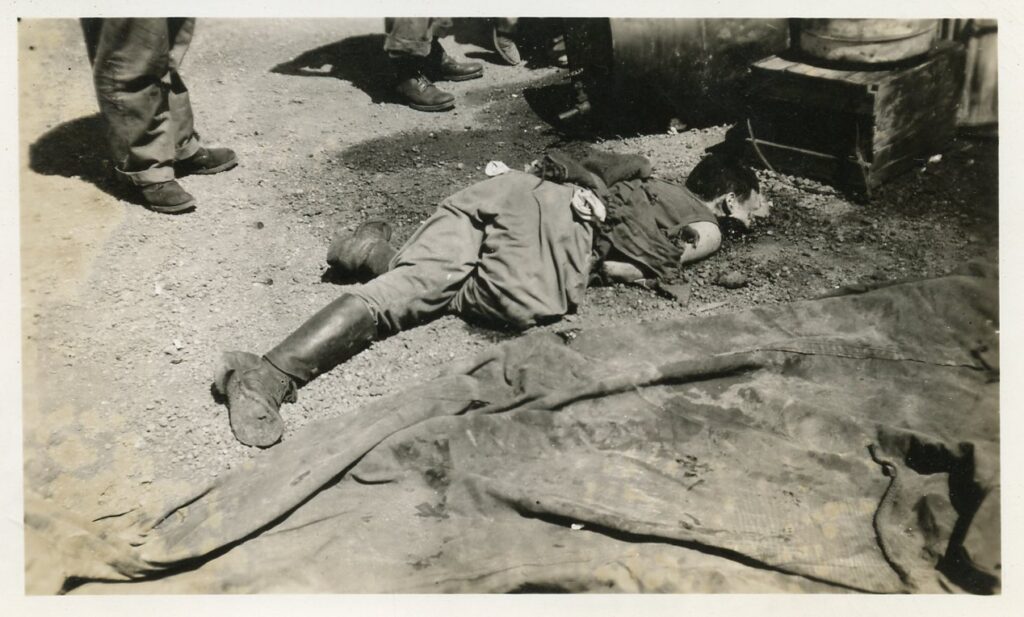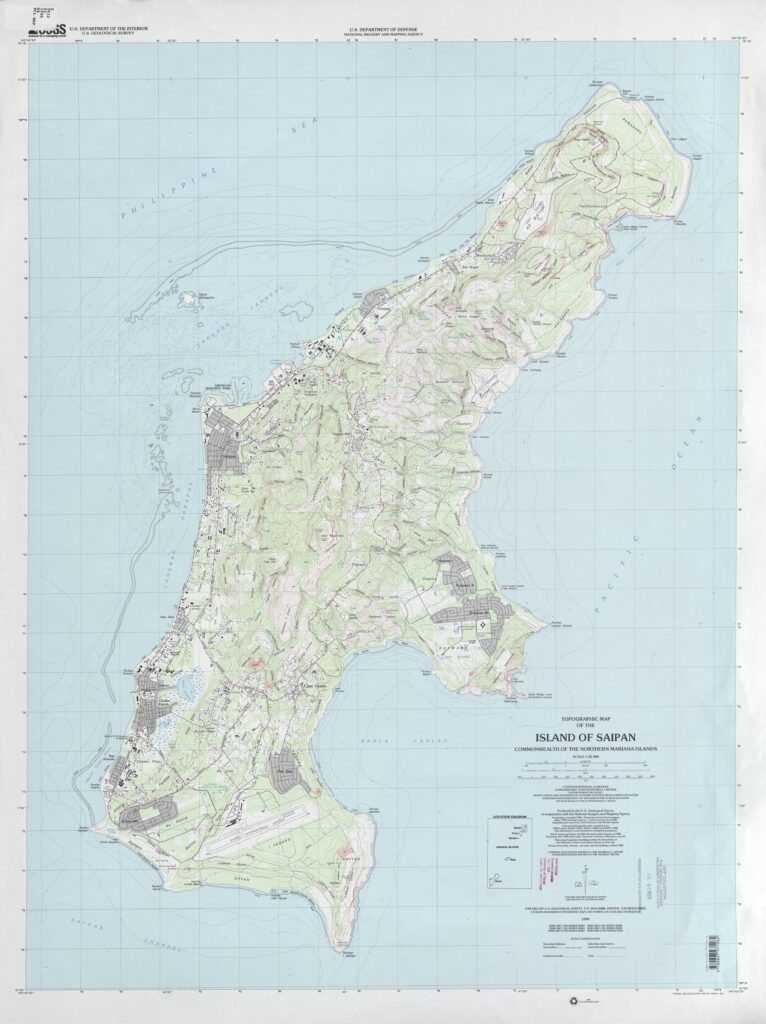
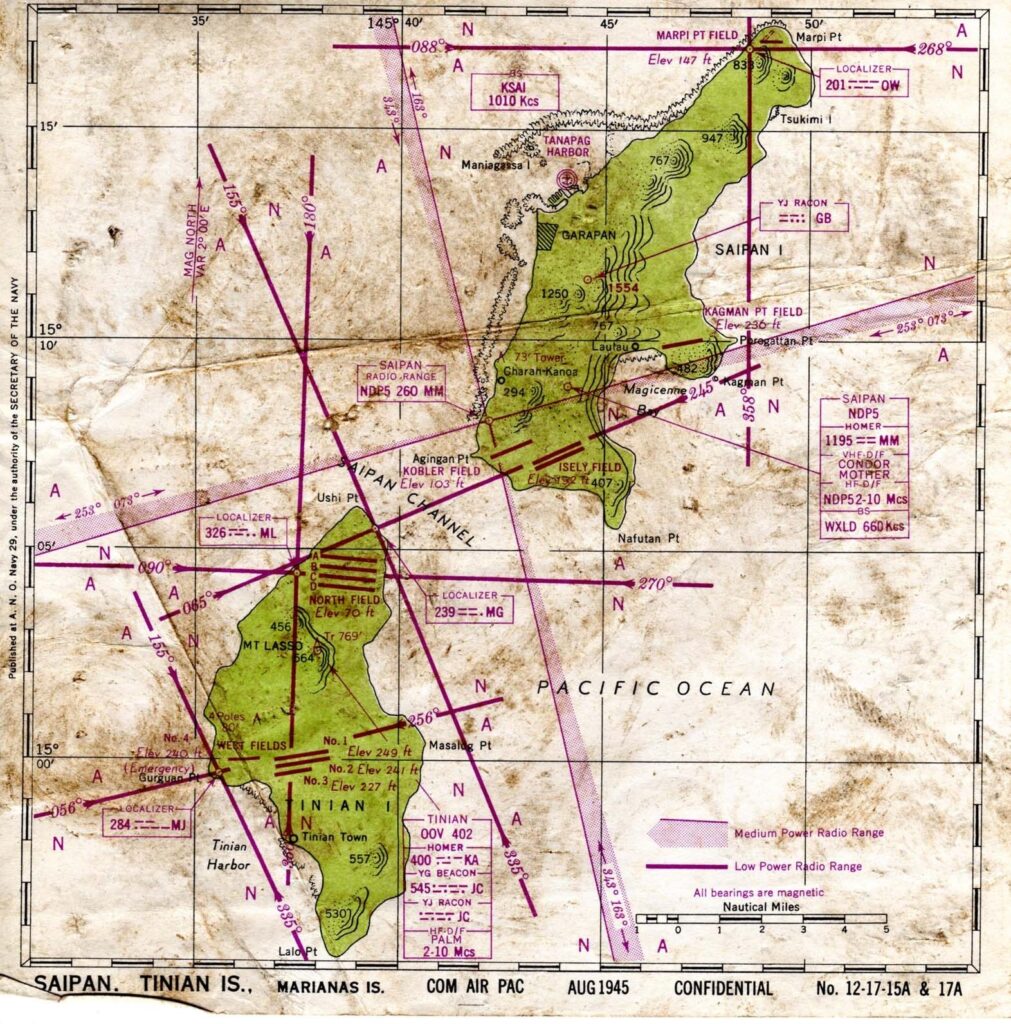
Unlike in WWII when they were enemies, Japan was an ally of England in WWI. In October 1914, shortly after England and Germany went to war, Japan captured Germany’s island territories in the Pacific north of the Equator: the modern-day Northern Mariana Islands (except for Guam, which was a US possession), Palau, Federated States of Micronesia, and Marshall Islands. After WWI the League of Nations gave Japan a mandate to administer these islands. Ultimately, “The Mandates” would become defacto territories of Japan by the 1930s.
Saipan, one of the Marianas, was the Mandate island most heavily colonized by Japan. By one estimate, in 1944 over 25,000 civilians lived on Saipan. By far the majority were non-natives—Japanese, Okinawans, and Koreans. (Korea, which had been under Japan’s control since 1905, was a source of cheap labor for the Empire.) Garapan was the island’s largest community. Captain Oba, a Japanese soldier mentioned elsewhere, thought that Garapan looked like a “typical Japanese seaside village” when he arrive in early 1944. The images that follow show Garapan before and after the US invasion of Saipan.
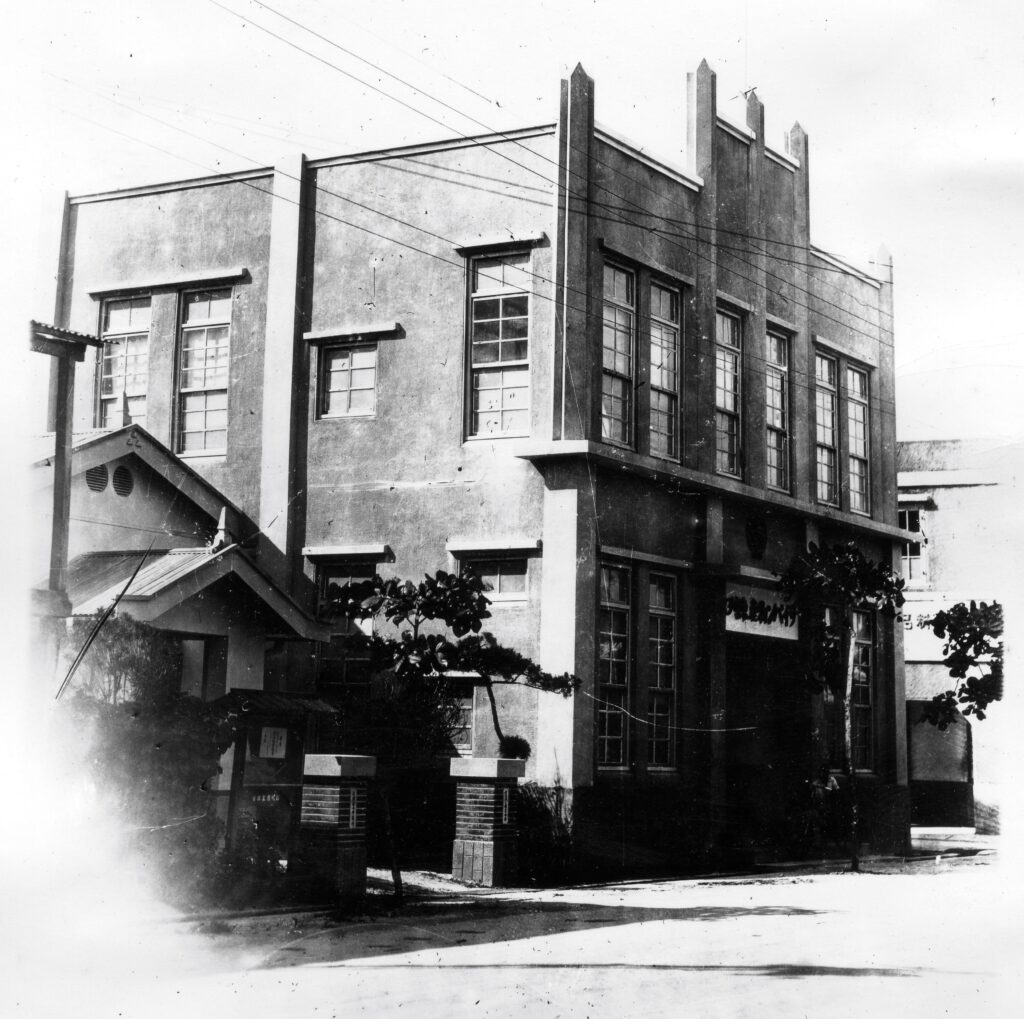
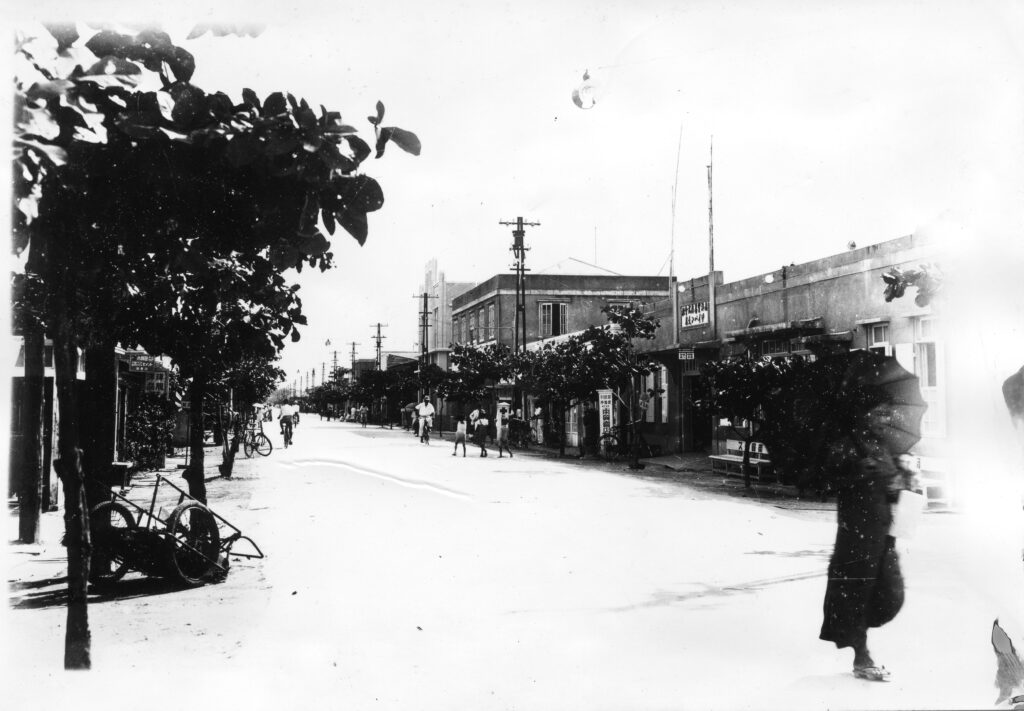
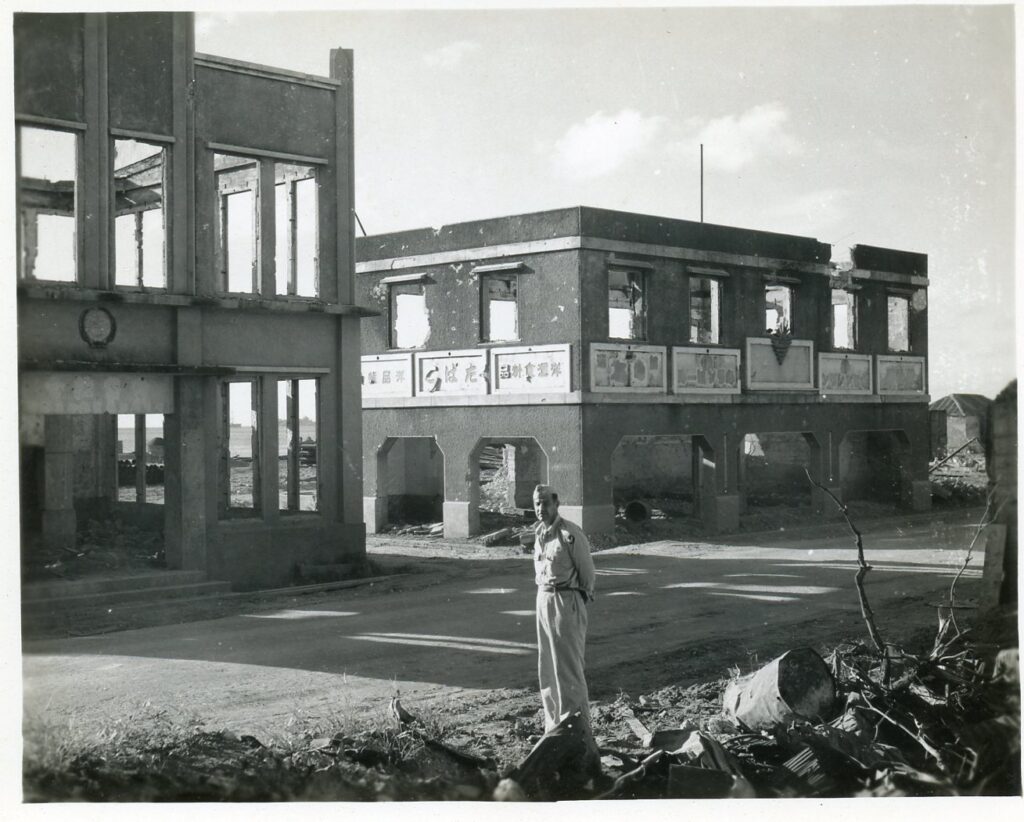
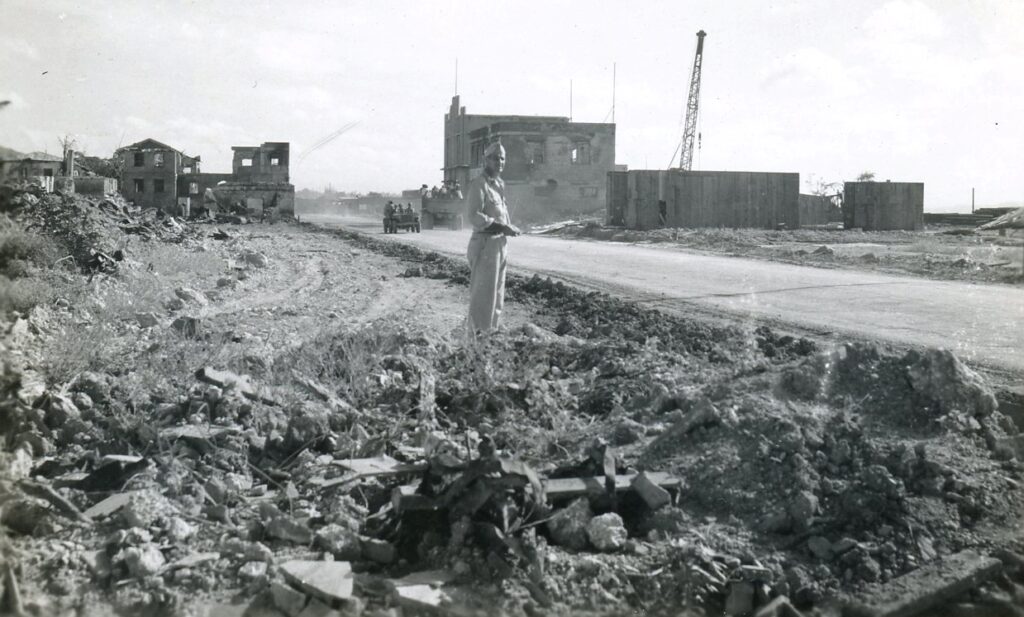
On June 15, 1944 the 2nd and 4th Marine Divisions assaulted Saipan with landings on the southwestern coast of the island. Although the Japanese had not completed their planned defenses, more than 31,000 Japanese soldiers were on the island and they put up a determined resistance. Consequently, on June 16, the commander of the invasion, Lt. General Holland Smith (USMC), committed his reserve force, the 27th Infantry Division to the fight. 2949 marines and soldiers died taking Saipan, and another 10,464 were wounded. Approximately 29,000 Japanese soldiers died.
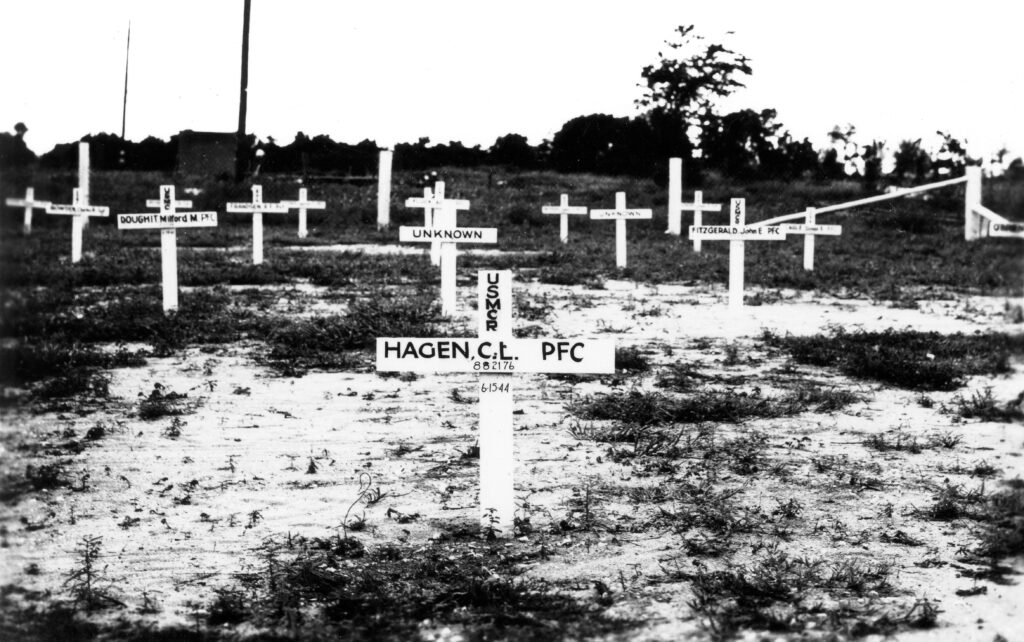
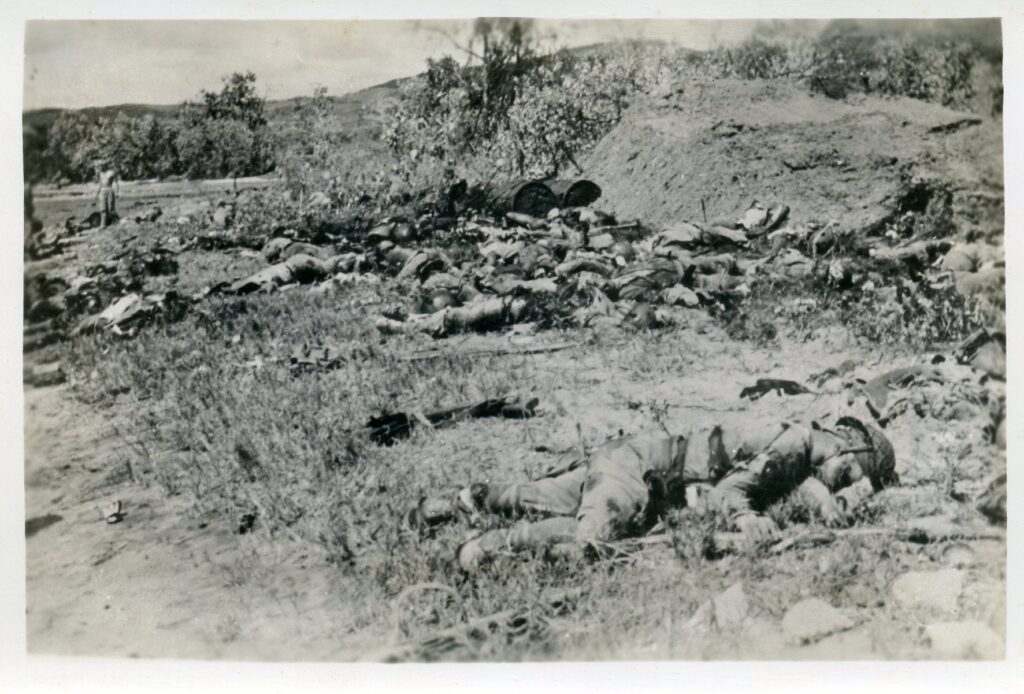
Saipan was the first place that American soldiers encountered significant numbers of Japanese civilians. Japanese officials had told the civilians that if the Americans came they would torture and kill the men, rape (and then kill) the women, and even eat their children. Believing these things, the civilians fled for the hills when the invasion started and many retreated with the Japanese soldiers as the Americans advanced. I have yet to find a definitive number of civilian deaths on Saipan. But, by one analysis about 10,000 died during the fighting. Many of those that died would be killed directly by the fighting, bombing and shelling. Others would be entombed in caves where they hid with Japanese soldiers. A stunning number would also commit suicide rather than be made captive. While American soldiers looked on in disbelief entire families leapt to their deaths from cliffs or threw themselves into the ocean to drown when finally cornered on the northern part of the island. In some cases civilians who were reluctant to commit suicide were killed by their own soldiers. This experience would lead American soldiers to wonder if the entire Japanese nation was prepared to commit suicide rather than surrender.
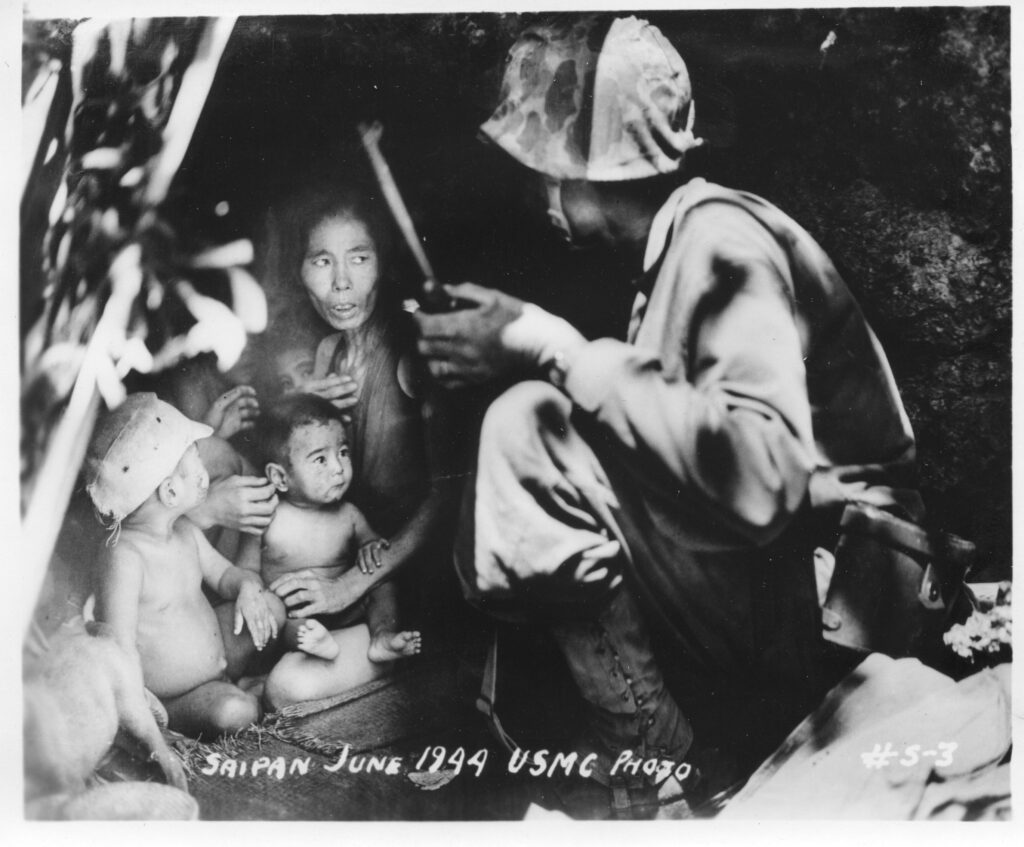
One characteristic of life on Saipan was Japanese “stragglers.” Although the island was declared “secure” in July 1944, a number of Japanese soldiers who had evaded death or capture in June and July 1944 fled to the hills and continued their resistance. For the entire time the 330th ASG was on Saipan, there were areas that were “Off Limits” to American serviceman and women. It was not unheard of for souvenir hunters who ignored the off limit signs in the hopes of finding some leftover war booty to be killed by a straggler.
There is evidence that when the 330th ASG first arrived there were stragglers in the general area where they were building their facilities. While working, some 330th ASG members got so smelly and dirty that bathing from their helmets was not enough and they decided to head to the beach to clean themselves and their clothes. Deciding to go to the beach in those early days was not done lightly though. People who did it carried carbines and kept a close watch for snipers. Also, although I have yet to find written confirmation, I have oral and photographic evidence suggesting that men of the 330th ASG were involved in patrols trying to find and capture or kill these Japanese soldiers.
The largest group of stragglers on Saipan was a band of soldiers (and some Japanese civilians) commanded by Captain Oba. The Americans would unsuccessfully go to great lengths to kill or capture him. He consistently outwitted his would-be captors earning the nickname “The Fox.” He and his soldiers did not lay down their arms until December 1945 – three months after the formal Japanese surrender.
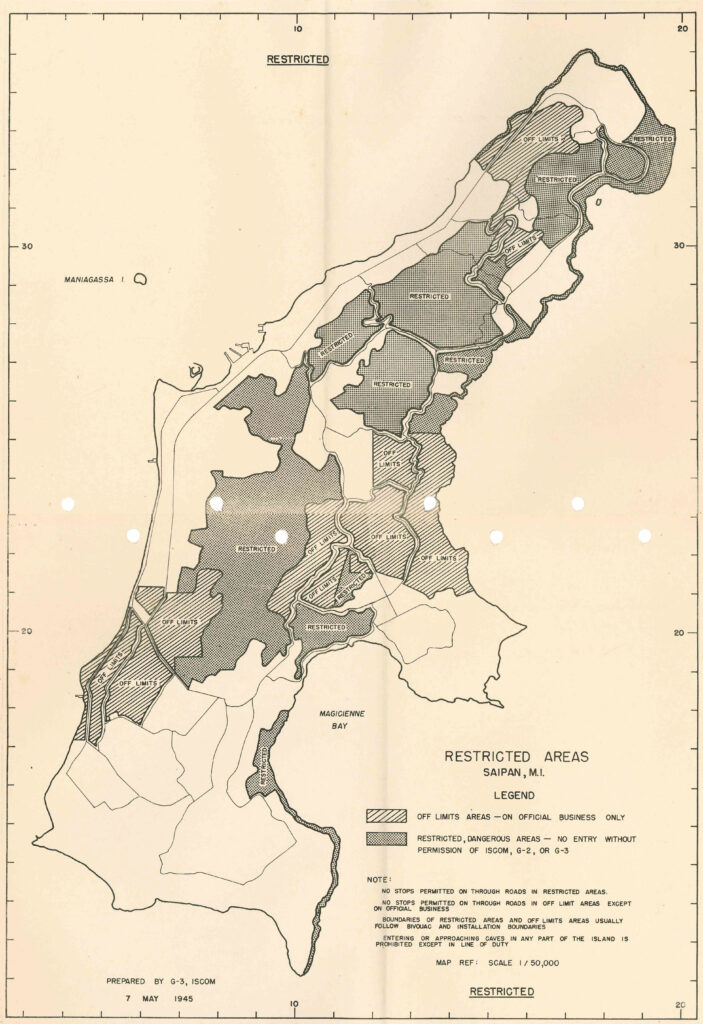
Although the stragglers posed a risk to the American soldiers on Saipan, they were at extreme risk of being captured or killed themselves. With few sources of food, supplies, or medicine, stragglers stole from American stockpiles to survive. The attempt was occasionally fatal.
